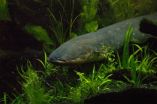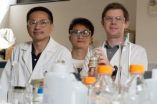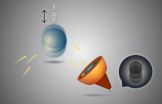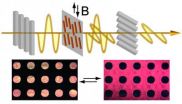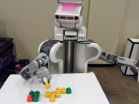Do people with autism struggle with driving?
First study asks autistic adults about real-world driving experiences
2014-06-26
(Press-News.org) PHILADELPHIA (June 26, 2014)— In the first pilot study asking adults on the autism spectrum about their experiences with driving, researchers at Drexel University found significant differences in self-reported driving behaviors and perceptions of driving ability in comparison to non-autistic adults. As the population of adults with autism continues growing rapidly, the survey provides a first step toward identifying whether this population has unmet needs for educational supports to empower safe driving – a key element of independent functioning in many people's lives.
"Previous research in my lab has included extensive research in driving capacity with people who have a variety of conditions such as multiple sclerosis or who had experienced traumatic brain injury," said study co-author Maria Schultheis, PhD, an associate professor of psychology at Drexel. "When we investigate whether and under what circumstances a condition or neurological difference might affect driving ability, as a standard starting point we want to go to individuals and find out from their perspective what problems they are having on the road, in their real-world experience. That question is pivotal to shape and inform the goals of long-term research – and is especially important when we turn to look at a developmental difference like autism, where there has been too little research to establish yet whether widespread driving difficulties exist."
Only a few previous studies have examined driving ability in individuals with autism, and those studies focused on adolescents and new drivers rather than experienced adult drivers. These studies relied on parent surveys and evaluations of discrete aspects of driving performance. The new Drexel study, published early online this month in the Journal of Autism and Developmental Disorders, used a validated survey that has been extensively used in driving research, and asked adult licensed drivers on the autism spectrum to describe their first-hand, real-world driving experiences.
"We were beginning to see discussion in the research literature that aspects of autism spectrum disorders, such as neurocognitive challenges and social recognition difficulties, could make it likely that members of this population would experience significant challenges with driving," said the study's lead author Brian Daly, PhD, an assistant professor of psychology in Drexel's College of Arts and Sciences. "But that assumption hadn't been studied in adult drivers, or based on the experiences of the drivers themselves – so these were the questions we explored."
In this survey, adults with autism spectrum disorders reported earning their drivers' licenses at a later age, driving less frequently and putting more restrictions on their own driving behaviors (such as avoiding driving on highways or at night), on average compared to non-autistic adults. The respondents with autism spectrum disorders also reported more traffic violations.
Because this pilot study was relatively small and based on self-reports of 78 ASD respondents and 94 non-ASD comparison participants, Schultheis and Daly noted that the differences they found were open to several possible interpretations. Autistic adults may have reported driving less often and restricting their behaviors out of self-awareness of actual difficulties or deficiencies in their driving. These difficulties and/or reduced driving exposure could also explain the higher rate of reported violations.
Alternatively, it is possible that the respondents on the autism spectrum were more honest in their answers, but no worse at driving than everyone else.
"In driving research, it's well established that people have a positive bias when reporting their own driving skills," said Schultheis. "Because the study relied on self-reported answers, we can't rule out whether the respondents with autism were simply being more descriptive and honest about their difficulties than the control group."
One intriguing finding that Daly and Schultheis noted was that the difficulties adults with autism reported were not clustered in any specific areas, such as problems related to social processing of other drivers' or pedestrians' expected behaviors, or difficulties with neurocognitive aspects of driving such as motion perception and reaction time.
"It suggests that the challenges these individuals are facing are more global than specific," Daly said.
"This is such an important study," said Paul Shattuck, PhD, an associate professor and director of the research program area in life course outcomes at the A.J. Drexel Autism Institute, who was not involved in conducting the study. "Cognitively-able adults on the autism spectrum face many barriers to full participation in society. Facilitating access to transportation options will increase the capacity for these adults to contribute to their communities."
Daly and Schultheis are continuing to investigate driving behavior in adults with autism through further research, with funding from the A.J. Drexel Autism Institute, the first autism research center focused on a public health science approach. In the next phase of research, the team is using driving simulation in Schultheis' lab to objectively capture aspects of actual driving performance in adults on the autism spectrum. Individuals interested in enrolling in these studies should contact schultheis@drexel.edu.
"This is a first step toward identifying, categorizing and quantifying challenges that may exist in this population," Schultheis said. "What we find will help determine what needs there may be for interventions, from driver education programs to different kinds of training exposures."
INFORMATION:
Link to paper: http://link.springer.com/article/10.1007/s10803-014-2166-y
ELSE PRESS RELEASES FROM THIS DATE:
Scientists find potential new use for cancer drug in gene therapy for blood disorders
2014-06-26
LA JOLLA, CA – June 26, 2014 – Scientists working to make gene therapy a reality have solved a major hurdle: how to bypass a blood stem cell's natural defenses and efficiently insert disease-fighting genes into the cell's genome.
In a new study led by Associate Professor Bruce Torbett at The Scripps Research Institute (TSRI), a team of researchers report that the drug rapamycin, which is commonly used to slow cancer growth and prevent organ rejection, enables delivery of a therapeutic dose of genes to blood stem cells while preserving stem cell function.
These findings, ...
Awareness month spurs web searches for autism
2014-06-26
PHILADELPHIA (June 26, 2014)—Autism Awareness Month each April brings blue lights and puzzle shapes out to shine in many communities – but does it actually lead to increased autism awareness? According to a new analysis of web search trends by researchers at Drexel University, it does appear to drive an increase in Google searches for autism – by a third over searches in March in recent years.
Brian K. Lee, PhD, an assistant professor in the Drexel University School of Public Health and research fellow of the A.J. Drexel Autism Institute, was senior author of the study ...
New infections cause dormant viruses to reactivate
2014-06-26
GAINESVILLE, Fla. — The famous slogan is "A diamond is forever," but that phrase might be better suited to herpes: Unlike most viruses, which succumb to the immune system's attack, herpes remains in the body forever, lying in wait, sometimes reactivating years later.
Researchers have long wondered what causes herpes viruses — two strains of which are linked to cancer — to reactivate after remaining dormant once the initial infection resolves. Now a team of researchers, including two University of Florida scientists, has discovered that interactions with other infections ...
Fighting parasitic infection inadvertently unleashes dormant virus
2014-06-26
Signals from the immune system that help repel a common parasite inadvertently can cause a dormant viral infection to become active again, a new study shows.
Further research is necessary to understand the clinical significance of the finding, but researchers at Washington University School of Medicine in St. Louis said the study helps illustrate how complex interactions between infectious agents and the immune system have the potential to affect illness.
The results appear online June 26 in Science Express.
The scientists identified specific signals in mice that ...
Sequencing electric eel genome unlocks shocking secrets
2014-06-26
EAST LANSING, Mich. — For the first time, the genome of the electric eel has been sequenced. This discovery has revealed the secret of how fishes with electric organs have evolved six times in the history of life to produce electricity outside of their bodies.
The research, published in the current issue of Science, sheds light on the genetic blueprint used to evolve these complex, novel organs. It was co-led by Michigan State University, University of Wisconsin-Madison, University of Texas-Austin and the Systemix Institute.
"It's truly exciting to find that complex ...
Water-cleanup catalysts tackle biomass upgrading
2014-06-26
Rice University chemical engineer Michael Wong has spent a decade amassing evidence that palladium-gold nanoparticles are excellent catalysts for cleaning polluted water, but even he was surprised at how well the particles converted biodiesel waste into valuable chemicals.
Through dozens of studies, Wong's team focused on using the tiny metallic specks to break down carcinogenic and toxic compounds. But his latest study, which is available online and due for publication in an upcoming issue of the Royal Society of Chemistry's journal Chemical Science, examined whether ...
Not much force: Berkeley researchers detect smallest force ever measured
2014-06-26
What is believed to be the smallest force ever measured has been detected by researchers with the Lawrence Berkeley National Laboratory (Berkeley Lab) and the University of California (UC) Berkeley. Using a combination of lasers and a unique optical trapping system that provides a cloud of ultracold atoms, the researchers detected a force of approximately 42 yoctonewtons. A yoctonewton is one septillionth of a newton and there are approximately 3 x 1023 yoctonewtons in one ounce of force.
"We applied an external force to the center-of-mass motion of an ultracold atom ...
Let there be light: Chemists develop magnetically responsive liquid crystals
2014-06-26
RIVERSIDE, Calif. — Chemists at the University of California, Riverside have constructed liquid crystals with optical properties that can be instantly and reversibly controlled by an external magnetic field. The research opens the door to display applications relying on the instantaneous and contactless nature of magnetic manipulation—such as signage, posters, writing tablets, and billboards.
Commercially available liquid crystals, used in modern electronic displays, are composed of rod-like or plate-like molecules. When an electric field is applied, the molecules rotate ...
Researchers conduct comprehensive review of treatments for depression in cancer patients
2014-06-26
Depression is common in cancer, up to half of all patients facing the disease experience depressive symptoms, ranging from mild to severe. When depression co-exists with cancer, patients may be at an increased risk of death from cancer and from suicide.
Antidepressants are commonly prescribed, but the evidence on their efficacy is mixed. The role of antidepressants in treating cancer-related depression has not been rigorously studied. To identify best practice for the treatment of depression in cancer, Dartmouth researchers completed a systematic review and meta-analysis ...
Ask the crowd: Robots learn faster, better with online helpers
2014-06-26
University of Washington computer scientists have shown that crowdsourcing can be a quick and effective way to teach a robot how to complete tasks. Instead of learning from just one human, robots could one day query the larger online community, asking for instructions or input on the best way to set the table or water the garden.
The research team presented its results at the 2014 Institute of Electrical and Electronics Engineers International Conference on Robotics and Automation in Hong Kong in early June.
"We're trying to create a method for a robot to seek help ...
LAST 30 PRESS RELEASES:
A decline in churchgoing linked to more deaths of despair
TAMEST announces Maralice Conacci-Sorrell, Ph.D., UT Southwestern Medical Center, as 2026 Mary Beth Maddox Award & Lectureship Recipient
Global study to evaluate whether dengue outbreaks can be anticipated earlier
Chonnam National University researchers propose innovative voltage-loop control for power factor correction
Accelerating next-generation drug discovery with click-based construction of PROTACs
Detecting the hidden magnetism of altermagnets
$7M gift supports health research, engineering and athletics at UT San Antonio
NU-9 halts Alzheimer’s disease in animal model before symptoms begin
Hospitals acquired by real estate investment trusts associated with greater risk of bankruptcy, closure
City of Hope scientists study rare disorder to uncover mechanism and hormone regulation underlying fatty liver disease and sweet aversion
Your genes may influence gut microbiome of others, rat study shows
‘Personality test’ shows how AI chatbots mimic human traits – and how they can be manipulated
Global food systems driving twin crises of obesity and global heating
Osaka Medical and Pharmaceutical University researchers capture real-time molecular movies of enzyme catalysis
Could your genes influence the gut microbiome of others?
Clues to Alzheimer’s disease may be hiding in our ‘junk’ DNA
Study reveals that the body uses different sensors to detect cold in the skin and in internal organs
iPS cells from dish to freezer and back
Deep neural networks enable accurate pricing of American options under stochastic volatility
Collective risk resonance in Chinese stock sectors uncovered through higher-order network analysis
Does CPU impact systemic risk contributions of Chinese sectors? Evidence from mixed frequency methods with asymmetric tail long memory
General intelligence framework to predict virus adaptation based on a genome language model
Antibiotic resistance is ancient, ecological, and deeply connected to human activity, new review shows
Vapes, pouches, heated tobacco, shisha, cigarettes: nicotine in all forms is toxic to the heart and blood vessels
From powder to planet: University of Modena engineers forge a low-carbon future for advanced metal manufacturing
Super strain-resistant superconductors
Pre-school health programme does not improve children’s diet or physical activity, prompting call for policy changes, study finds
Autumn clock change linked to reduction in certain health conditions
AI images of doctors can exaggerate and reinforce existing stereotypes
Where medicine meets melody – how lullabies help babies and parents in intensive care
[Press-News.org] Do people with autism struggle with driving?First study asks autistic adults about real-world driving experiences


